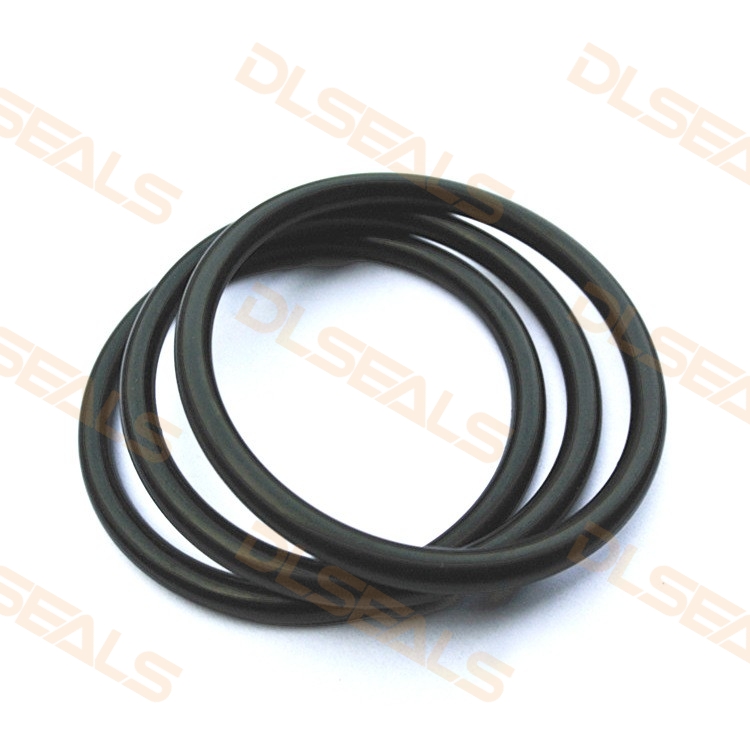Ethylene Propylene Diene Monomer (EPDM) rubber is a highly significant synthetic elastomer that plays an indispensable role in the sealing industry. Its unique molecular structure grants it a set of exceptional properties, making it an irreplaceable choice for specific operating conditions. This article provides an in-depth exploration of the performance, advantages, and key considerations for EPDM seals.
I. Core Properties and Characteristics
The performance of EPDM seals stems from its saturated, non-polar carbon-carbon backbone, which gives it the following outstanding features:
- Exceptional Weather and Ozone Resistance: This is EPDM’s most notable advantage. It exhibits extreme resistance to sunlight (UV radiation), ozone, oxidation, and extreme weather conditions. It does not crack, harden, or degrade easily like many other elastomers, making it the ideal choice for outdoor applications.
- Excellent Heat and Water Resistance: EPDM maintains good elasticity across a wide temperature range, typically from -50°C to +150°C (with short-term tolerance for even higher temperatures). It offers superb resistance to hot water, steam, and moisture, making it the primary sealing material for hot water systems, steam equipment, and automotive cooling systems.
- Good Chemical Stability: It demonstrates strong resistance to a variety of polar chemicals, including:
- Phosphate ester-based fire-resistant hydraulic fluids (e.g., Skydrol®)
- Dilute acids and alkaline solutions
- Ketones (e.g., acetone), alcohols (e.g., ethanol), and esters
- Many polar solvents and silicone grease
- Superior Electrical Insulation Properties: EPDM has low electrical conductivity, making it highly suitable for electrical insulation and sealing applications.
- Good Elasticity and Low Compression Set: With proper compounding and curing systems, EPDM can exhibit excellent resilience and low compression set, ensuring lasting and effective sealing.
II. Key Advantages
Based on the above properties, EPDM seals offer the following core benefits:
- Long Service Life and High Reliability: In their suitable environments, EPDM seals offer an extremely long service life, reducing maintenance needs and downtime.
- Specialized and Optimal Application Range: In the areas of steam, hot water, and weather resistance, few other general-purpose elastomers can match its performance.
- High Cost-Effectiveness: Compared to specialty elastomers like Fluorocarbon (FKM), EPDM has a lower cost, providing excellent value for money.
III. Key Considerations and Limitations
Understanding the limitations of EPDM is crucial for its successful application. Incorrect material selection is the primary cause of its failure.
- Poor Resistance to Hydrocarbon Oils and Solvents: This is EPDM’s most significant weakness. It must never be used in contact with mineral oils, lubricating oils, gasoline, diesel fuel, greases, or most non-polar solvents. Exposure to these media will cause severe swelling, deformation, and ultimate failure of the seal.
- Poor Resistance to Strong Acids and Hydrocarbons: While resistant to dilute acids and alkalis, its resistance to concentrated acids, concentrated alkalis, and hydrocarbon-based chemicals is poor.
- Gas Permeability: Compared to elastomers like Nitrile (NBR), EPDM has higher gas permeability, which may require careful consideration for applications demanding high gas tightness.
IV. Common Application Areas
EPDM seals are widely used in the following scenarios:
- Automotive Industry: Automotive cooling systems (radiator seals, water tank seals), door and window seals, windshield wiper blades, spark plug boots.
- Construction Industry: Door and window seals, curtain wall gaskets, roofing membranes.
- Appliance Industry: Washing machine door gaskets, dishwasher seals, water heater seals.
- Industrial Sector:
- Seals for steam, hot water, and heating systems.
- Hydraulic systems using phosphate ester fire-resistant fluids (HFD-R).
- Solar panel sealing.
- HVAC duct sealing.
- Others: Wire and cable insulation, seals for various outdoor products requiring weather resistance.
V. Selection and Usage Recommendations
- Media Compatibility is Paramount: Before selection, always confirm the media the seal will contact. The primary rule is to avoid all petroleum-based oils and fuels. Request chemical compatibility charts from suppliers for verification.
- Consider Temperature Range: Ensure the operating temperature falls within EPDM’s recommended long-term service range.
- Differentiate Between Grades: Different EPDM compounds (e.g., DCPD-type, ENB-type) vary slightly in curing speed, heat resistance, and compression set. Choose based on specific performance requirements.
- Installation and Storage: Install without twisting or overstretching, using tools that won’t damage the seal. Store in a cool, dry, dark place away from ozone sources (e.g., electric motors).
Summary and Comparative Context
EPDM seals are the champion material for applications requiring resistance to weather, hot water, and steam. Their exceptional aging resistance and stability in polar media make them crucial in the automotive, construction, and appliance industries. However, their critical weakness is incompatibility with hydrocarbon-based oils. Therefore, the secret to successful EPDM application is leveraging its strengths while strictly avoiding petroleum-based media. In the right conditions, it is a durable, reliable, and cost-effective choice.
For context, EPDM’s performance profile differs significantly from other common sealing materials. It offers superior weather/ozone and hot water/steam resistance compared to Nitrile (NBR), which excels with petroleum-based oils but fails in steam. Fluorocarbon (FKM) provides excellent overall oil and heat resistance but at a higher cost and can be susceptible to hydrolysis in steam, unlike EPDM. Silicone (SIL) offers excellent high-temperature stability but generally poor resistance to steam, oils, and solvents. EPDM occupies a unique, cost-effective niche where its specific strengths are paramount.
Post time: Sep-03-2025

